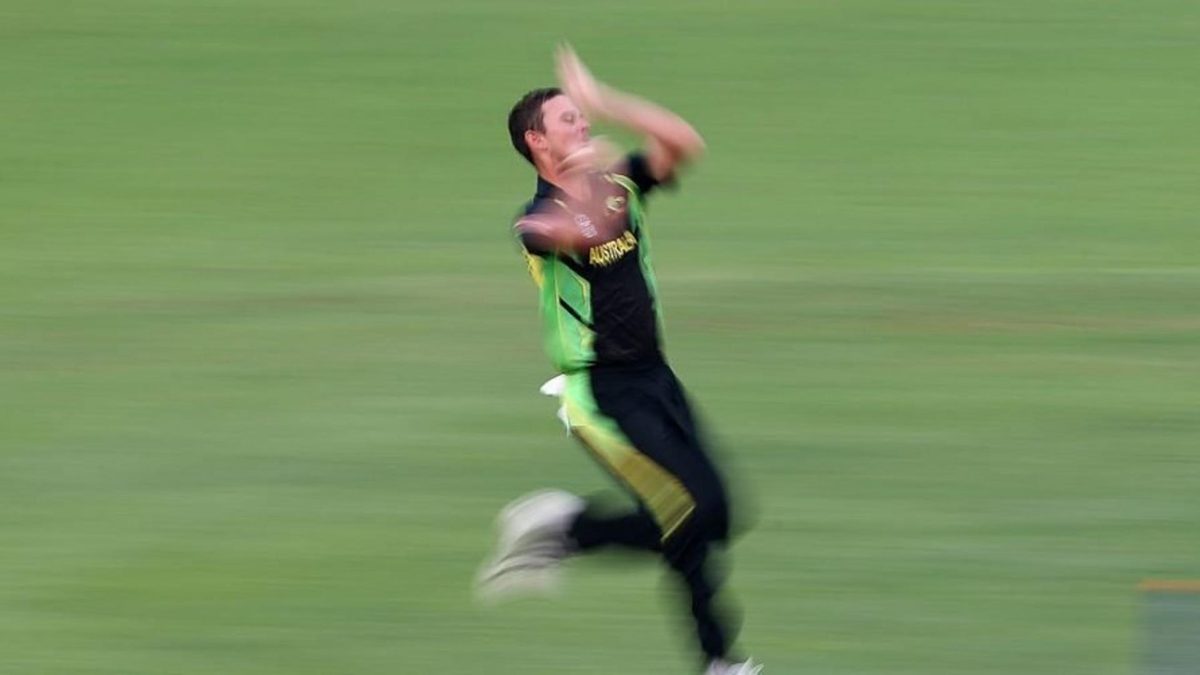
Josh Hazlewood had played just nine T20Is across seven years before 2021 when Australia took a punt on him for the T20 World Cup, backing him him for eight successive games. Rohit Sankar analyses Hazlewood the T20 bowler and why Australia have put so much faith in him ahead of the World Cup.
There’s something enigmatic and poetically beautiful about Josh Hazlewood the Test bowler. If you are new to cricket and watching Hazlewood bowl, it’s likely it wouldn’t be long before you’d zone out. Landing the ball in the same area repeatedly is a basic but underrated skill. Hazlewood is the flag bearer of this skill.
Throw the same skill set into T20 cricket and you are called ‘predictable’. In a format where unpredictability, any sort of ‘mystery’ really, is valued highly, Hazlewood is a ‘boring’ seam bowler. It’s probably why he had only played nine T20Is for Australia in the first seven years of his T20I career
In fact after the 2016 World T20 until 2020, Hazlewood wasn’t playing any kind of T20 cricket at all. Prior to his outings in the 2019/20 Big Bash League, Hazlewood had gone nearly four years without an appearance in the format.
Hazlewood returned five wickets at an economy rate of 6.22 in his five games for the Sydney Sixers – a good stint, but Australia weren’t bringing him into the T20I setup from the wilderness just yet. Chennai Super Kings, however, needed no evidence of Hazlewood’s skills. He was picked out of the blue in the IPL auction in late 2019 with no T20 cricket behind him in the preceding three and a half years.
CSK’s success in the IPL is largely owing to how good they are at finding roles for players, allowing MS Dhoni to get the best out of them. Hazlewood fitted their overall bowling plans as a powerplay, hit-the-deck quick who could complement Deepak Chahar.
Hazlewood was in and around CSK’s plans, but Australia did not see him as one of their first five choices when they embarked on a South African tour in early 2020. Mitchell Starc, Pat Cummins, Jhye Richardson, Kane Richardson and Sean Abbott were backed ahead of him. In August 2020, he was then part of an extended 21-man squad for the six limited-overs games in England and he played his first T20I for Australia in four years: 4-0-23-1.
If Hazlewood wasn’t a real contender for a T20 World Cup spot until that point, the pulling out of several senior players for the West Indies and Bangladesh tour earlier this year gave him a sound opening, and he grabbed it.
He is Australia’s leading quick in 2021 in this format with 12 wickets across eight matches at an average of 16.75 and an economy rate of 6.55. His impact has been most pronounced, as expected, in the powerplay. Seven of his 12 wickets came in that phase where his economy rate of 5.89, even considering the difficult batting wickets the two series were played on, stands out.
Hazlewood missed the first leg of the IPL due to personal reasons but those eight T20Is have catapulted him straight into Australia’s T20 World Cup squad.
He is still a very strange pick when you consider that Australia have backed a different set of bowlers in the build up to the event. Andrew Tye (23 games), Billy Stanlake (19 games), Nathan Coulter-Nile (11 games), Jhye Richardson (9 games) and Jason Behrendorff (7 games) are other quicks who had much more game time since the end of the 2016 T20 World Cup before Hazlewood’s return in September 2020. None of them are in Australia’s T20 World Cup squad.
In fact, their squad has four quicks, three of whom are their first-choice picks in Test cricket: Pat Cummins, Mitchell Starc and Josh Hazlewood. While Starc is another who hasn’t played a lot of T20 cricket – but is deemed to be good enough based what he has achieved in international white-ball cricket in the past – Cummins, like Hazlewood, hasn’t quite nailed the format yet either. Interestingly, all three are strongly inclined to the powerplay overs although Starc has enough value at the death. Kane Richardson is the other pick in the fast bowling group, but it’s difficult to see him playing ahead of the big three.
Hazlewood has been keen to develop his skill sets in the format. The games in Bangladesh and West Indies saw him bowl more cutters and vary his length to keep the batters guessing. Hurt by his omission from the 2019 ODI World Cup squad – so much so that he said he was “steering clear of it [watching the World Cup]” – Hazlewood has a shot making a mark on a global white-ball event. There were some eyebrows raised over his selection, but very few would be surprised if Hazlewood strolls in and hits the right spot at the World Cup.








